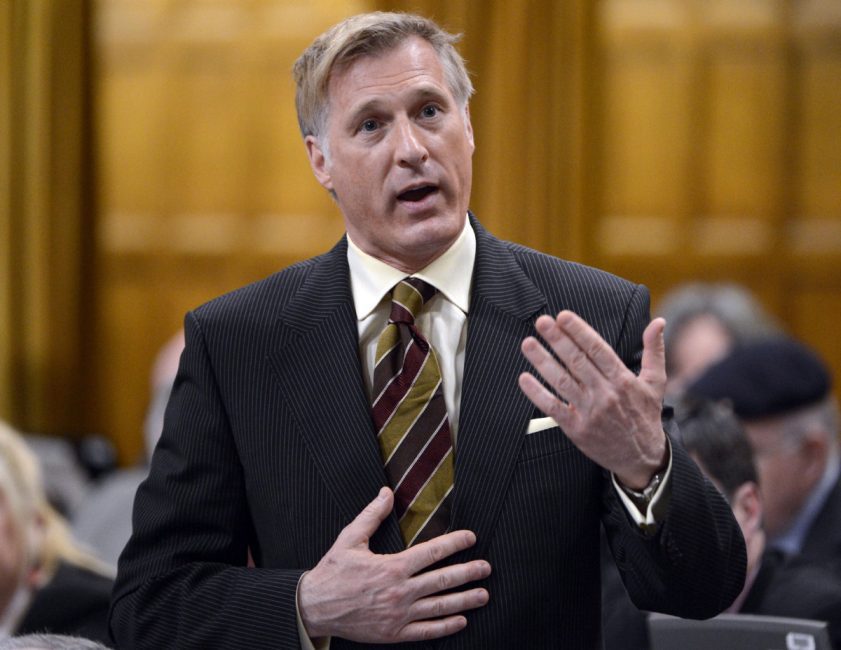For 149 years, governments in Canada have been trying to abolish interprovincial trade barriers, and make us a grown-up federalist country. For 149 years, there has been halting progress as we are seeing right now with the latest provincial plan. But don't worry Conservative leadership candidate Maxime Bernier has it covered.
On Monday, Bernier announced his plan (should he win the leadership and eventually be elected prime minister) to eliminate those barriers in a two-step process: legislate a Charter of Economic Rights, and establish an Economic Freedom Commission to investigate breaches of that Act by the provinces and send them to arbitration.
Bernier's supposition is that since Confederation, people haven't been respecting the Constitution when it comes to those trade barriers, and cites Section 121 of the Constitution Act 1867, which states:
All Articles of the Growth, Produce, or Manufacture of any one of the Provinces shall, from and after the Union, be admitted free into each of the other Provinces.
There are a few holes in Bernier's logic, however. One is that Section 121 is listed as "Canadian manufacturers" as its heading, which may not necessarily be applicable to some of the real trade irritants between provinces, like non-tariff barriers, regulations that are not in harmony, or credentials recognition by provincial bodies. The other hole is that Bernier ignores the judicial history related to Section 121.
Early in Confederation, a number of challenges to these trade barriers were brought forward to the Judicial Committee of the Privy Council in London, which at the time was the highest court of appeal. The JCPC, however, was an enthusiastic supporter of Section 92 of the Constitution, which governs provincial areas of jurisdiction, and these decisions by the JCPC strengthened provincial powers at the expense of federal ones. Interprovincial trade barriers were one of the victims of that particular series of interpretations, so it's really disingenuous for Bernier to posit that the problems are because governments haven't been respecting the constitution and that they simply need to. It's a more complex problem than that.
What some of Bernier's own caucus colleagues have been demanding of late is that the government refer Section 121 to the Supreme Court of Canada to get an opinion on what ways in which they can use those powers to bring the barriers down (something, I will note, they did not seem keen to do when they were in government). The Liberals have said that they don't plan to make such a reference or indeed to intervene in the ongoing court case in New Brunswick around the importation of alcohol over provincial lines because they would prefer the provinces work it out between themselves rather than have the federal government impose a solution. As we saw in the announcement on trade barriers a few weeks ago, that has proven to be a very slow process that is still bound up in provincial protectionism. It is likely that any government that wanted to start using Section 121 powers would need the Supreme Court to rule on the limits of those powers in order to overturn previous decisions from the JCPC, which is nowhere in Bernier's plan.
And then there is the substance of Bernier's Economic Charter. Bernier says that this Charter will "lay out the rights of Canadians to pursue their own economic prosperity, without needless red tape getting in their way." And this should send your alarm bells off, because this winds up being yet more buzzwords without any real sense of the problem that's trying to be addressed.
The previous government, which Bernier was a part of, spent a lot of talk talking about reducing red tape. They made a special "one-for-one" rule about needing to remove an old regulation before a new one was brought into place, and they kept touting this reduction all over the place. The problem was that these reduction rules were both riddled with exceptions and loopholes, and was never seen as a credible exercise anyway because the government always had the power to delete or amend regulations and didn't need the public relations exercise to go about doing it. In the end, not much was done, particularly as their Red Tape Reduction Act had no enforcement mechanisms in it.
The bigger problem with "red tape" as well is that it is rarely the departmental regulations that were the problem, but rather tax law and Canada Revenue Agency compliance that small businesses in particular were concerned with. Tax simplification is a bigger problem than regulation that successive governments have refused to budge on despite it being the bigger problem. This also gives us the question about just what would be defined in this Charter as "unnecessary" red tape. Health and safety regulations? Environmental ones?
Which brings us to the biggest point of all that putting this Charter into legislation will wind up being a gift only to litigators rather than to businesses trying to do trade across provincial lines in this country. Between provinces taking the federal government to court over interpreting Section 121 and what they would justifiably see as federal overreach into their areas of jurisdiction, and constant court challenges over which regulations should be considered "necessary," what it inevitably does is force the issues into the courts rather than legislatures. Do we want the courts to start making the determination over which regulations should be deemed "necessary"? Should we be filling up the Supreme Court's docket with challenges about which province's regulations are the biggest barriers to be struck down rather than coming up with a political process to harmonize those regulations with enough carrots and sticks to make them come to an agreement?
Bernier may think the task is a simple one, but simply shouting "freedom" and brandishing a copy of the constitution isn't a plan. This is a complex issue with a long history that will require more nuance than Bernier seems willing to devote to it.
Photo Credit: Toronto Star








